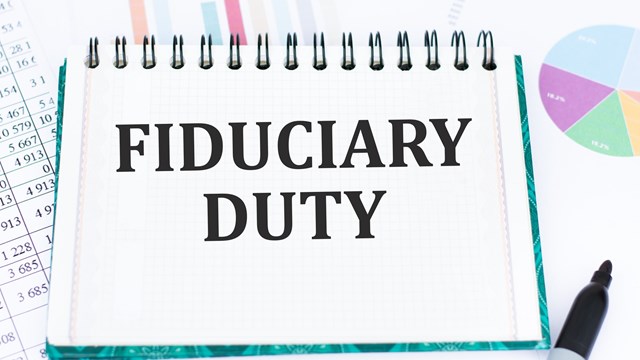A leaking pool, a wall in need of repair, a faulty exhaust system, chimney and furnace repairs… Who’s responsible for fixing them? Generally, most leases provide that “structural” repairs are the landlord’s responsibility and that “nonstructural” repairs are the tenant’s. However, what constitutes “structural” versus “non-structural” repairs or alterations are frequently disputed issues with potentially far-reaching financial ramifications for cooperative corporations and commercial tenants.
A recent decision of note, Excel Associates v. Excelsior 57th Corp., 2011 N.Y. Slip Op. 32117[U], 2011 WL 3471228 (Sup. Ct. N.Y. County, Aug. 11, 2011), decided by the New York Supreme Court in August 2011 (Hon. Judith J. Gische), illustrates how complex these issues can be. While the court’s holding that the repairs at issue were “non-structural” is consistent with legal precedent, the court also noted that the definition of a structural repair is a “flexible” one, which is determined on a “case-by-case basis.”
The repairs in question were of a leaking pool in the health club on the fifth floor of the Excelsior, a co-op building at 303 East 57th Street. Both Excel, the master commercial lessee of five floors of commercial space at the building, and Excelsior 57th Corporation, the cooperative corporation/landlord, had sought declarations stating that the other party was financially responsible for the repairs to the pool. Pursuant to a provision in its long-term commercial lease with Excelsior, Excel was obligated, at its sole cost, to make all “non-structural repairs” to the premises and to make all “structural repairs” which were caused by its own negligence or the negligence of its subtenants and their respective employees or agents.
All into the Pool
In June 1984, Excel sublet the health club to Megafit Corporation, which assumed certain responsibility for the pool. In 1986, Megafit installed a new pool within the existing pool and subsequently made some patchwork repairs after the pool developed severe leaks, flooding the floor below. When the repairs performed by Megafit proved insufficient, the pool was drained to determine the cause of the leaks. In 2010, Excel performed repairs to the pool, which involved the replacement of components of the pool’s gutter system, including the filtration and drainage systems, and the installation of a new waterproof membrane at a cost of approximately $50,000.
The Court’s Findings
The court rejected Excel’s arguments that the repairs to the pool were “structural” because of the size of the pool and the number of gallons of water that it held and because the failure to make such repairs would have resulted in damage to the building. It found that, as a matter of law, the repairs to the pool were non-structural and that, under the terms of the Lease, Excel was solely responsible for their cost. Accordingly, the court granted partial summary judgment to Excelsior on its counterclaim seeking declaratory judgment on this ground and held that Excelsior was not responsible for indemnifying Excel in any action brought by third parties resulting from damage to the pool.
The court’s determination relied upon well-settled New York law. As the Court observed, the “persistent understanding” in the law is that “[a] structural change or alteration is such a change as affects a vital and substantial portion of the premises, as changes its characteristic appearance, the fundamental purpose of its erection, or the uses contemplated, or a change of such nature as affects the very realty itself – extraordinary in scope and effect and unusual in expenditure”, citing such precedent as Garrow v. Smith, 198 A.D.2d 622, 623, 603 N.Y.S.2d 635, 636 (3d Dept. 1993) and Pross v. Excelsior Cleaning & Dyeing Co., 110 Misc. 195, 179 N.Y.S. 176 (N.Y. Mun. Ct. 1919).
Repairs Declared Non-Structural
Applying this definition, the court found that the repairs to the pool’s gutter system were non-structural because they involved the pool’s filtration and drainage systems, which were not part of the building or the leased premises, and because the repairs did not change any vital aspect of the premises, the health club, or the fundamental appearance of the building or the prior or continued uses of the leased premises. Rather, the pool was found to have suffered “structural damage in that the gutter trough had corroded to a very thin layer and was most likely the cause for the continuing leaks that had been occurring.” Noting that generally the distinction between structural versus nonstructural repairs arises in the context of obtaining permission to make alterations rather than in connection with the obligation to make them and that the landlord bears a presumptive burden of keeping the building in proper repair, the Court found that “there [was] nothing extraordinary about replacing a corroded gutter or a filtration system in the Pool: such repairs are patently nonstructural.”
As further noted by the court, the definition of a structural repair is a “flexible” one, which calls for a determination on a “case by case basis, with due consideration for ‘the nature and extent of the proposed repair or alteration [and] the structure itself’”. This inquiry looks to a number of factors such as the parties’ intent at the time of the lease, the nature of the construction, whether the work was foreseen or unforeseen, the intended use of the premises and the relative benefit to each party.
Although certain repairs have generally been viewed as structural [e.g., Josam Associates v. General Bowling Corp., 135 A.D.2d 502, 521 N.Y.S.2d 741 (2d Dept. 1987) (installation of sewer system); Warrin v. Haverty, 159 A.D. 840, 144 N.Y.S.1004 (1st Dept. 1913) (demolition and replacement of walls of building)] as opposed to nonstructural [e.g., Frequency Electonics, Inc. v. We’re Assoc. Co., 120 A.D.2d 489, 490 501 N.Y.S.2d 693 (2d Dept. 1986) (installation of exhaust system and air conditioning units)], careful drafting of the lease is critical to define the parties’ respective obligations for repairs or alterations. By clearly and unequivocally identifying those repairs or alterations for which each party is responsible, the parties can avoid the uncertainty inherent in the court’s application of the “flexible” definition of a structural or nonstructural repair to the particular circumstances of their case.
Judith Zerden, Esq., is Of Counsel to Kurzman Eisenberg Corbin & Lever, LLP and Stuart Berg, Esq., is a partner at the firm and served as lead counsel for Excelsior 57th Corp. in this matter.










Leave a Comment